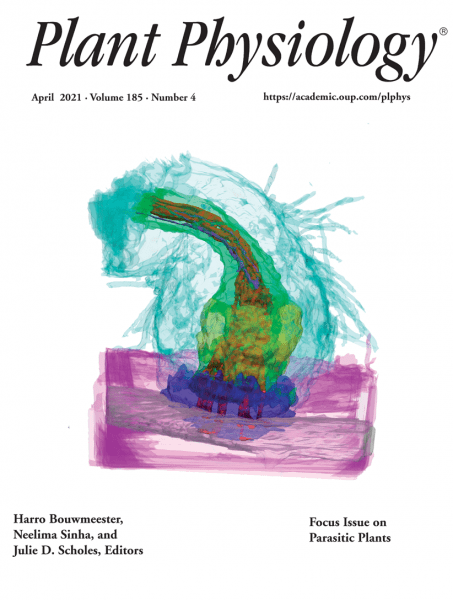Parasitic plants use haustorium to absorb parts or all of nutrient resources required for their growth from host plants. As a multicellular organ, the haustorium consists of different cell types, yet the knowledge on their spatial arrangement is largely limited and far lagging from that of other organs such as root and shoot. This paper (Masumoto et al. 2021) demonstrates a three-dimentional reconstruction approach based on the unique subcellular characteristics of each haustorial cell type from thin hand sections and illustrates the unforeseen 3D structures of haustoria in two Orobanchaceae parasites, Striga hermonthica and Phtheirospermum japonicum, highlighting the similarity and uniqueness in the spatial pattern of haustorial internal cells between obligate and facultative parasites.
Such spatial information provides a deeper insight into parasitic-host plant interaction at the tissue level and founds a resource for dissecting parasitic plant infection process as well as host resistance mechanisms.
Reference
Masumoto N, Suzuki Y, Cui S, Wakazaki M, Sato M, Kumaishi K, Shibata A, Furuta KM, Ichihashi Y, Shirasu K, Toyooka K, Sato Y, Yoshida S (2021) Three-dimensional reconstructions of haustoria in two parasitic plant species in the Orobanchaceae. Plant Physiol 185: 1429-1442
Link
https://academic.oup.com/plphys/article/185/4/1429/6119653
